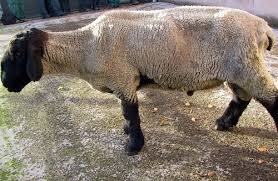

Johne’s disease is a fatal gastrointestinal disease of sheep and goats and other ruminants that is caused by the bacterium Mycobacterium avium subspecies paratuberculosis (MAP). Also known as paratuberculosis, this infection is contagious, which means it can spread in your flock or herd. Young animals are more susceptible to the disease than adults.
It is primarily spread by the fecal-oral route but may also be transmitted across the placenta and through milk and colostrum of infected ewes and does.
The most consistent clinical sign in sheep and goats is chronic weight loss despite a good appetite. Although profuse diarrhea is common in cattle with Johne’s disease, this sign is not common with goats or sheep. It is important to differentiate this disease from internal parasites because these conditions may look similar.
This wasting condition eventually results in death although infected animals may take months to years to show clinical signs of the disease. An infected animal can be shedding the organism in its feces, contaminating the environment and other animals in the herd.
Treatment
The organisms is more resistant to chemotherapeutic agents invitro than Mycotuberculosis. Because of this the practical utility of treatment in clinical cases is poor.
Control
The affected animal should be segregated and their faeces properly disposed off. Alive vaccine have been developed. It reduces the incidence of clinical disease. It consists of a non-pathogenic strain of Jhone`s bacillus with an adjuvant. The calves soon after birth are inoculated with vaccine subcontaneously. The vaccinated animals become reactors of Jhonin. Vaccination is generally done in heavily infected herds.
 Contact Jaguza Support
Contact Jaguza Support